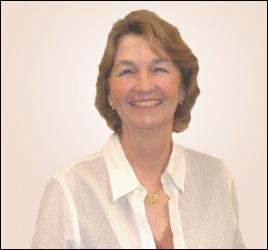Nancy Dobbs: Public Innovator Pick
 This edition of The Harwood Institute’s newsletter features Nancy Dobbs, President and CEO of PBS’ KRCB-TV and NPR’s KRCB-FM in Rohnert Park, Calif.
Dobbs began her career working for former California State Assemblyman Barry Keene before taking a job to help launch KRCB-TV. Now, 30 years later, Dobbs has a staff of 45. She backs issues that affect the area such as community health and protecting Northern California’s environment through shows such as “Natural Heroes” and “Rebels with a Cause,” a film that chronicles the fight to protect public land along Northern California’s coast.
This edition of The Harwood Institute’s newsletter features Nancy Dobbs, President and CEO of PBS’ KRCB-TV and NPR’s KRCB-FM in Rohnert Park, Calif.
Dobbs began her career working for former California State Assemblyman Barry Keene before taking a job to help launch KRCB-TV. Now, 30 years later, Dobbs has a staff of 45. She backs issues that affect the area such as community health and protecting Northern California’s environment through shows such as “Natural Heroes” and “Rebels with a Cause,” a film that chronicles the fight to protect public land along Northern California’s coast.
In her efforts to ensure that programming stays relevant to the community, Dobbs participated in the Corporation for Public Broadcasting’s 2007 Community Engagement Initiative, in which The Harwood Institute helped 12 public radio and TV stations improve the civic health of their communities and deepen their own local significance.
In the following Q&A, Dobbs shares her involvement in the initiative and her efforts to increase engagement with KRCB’s audiences.
If you’re a public broadcaster seeking to increase relevance to your community, contact The Harwood Institute’s Mike Wood at mwood@theharwoodinstitute.org or call 301-656-3669.
The Harwood Institute: What prompted you to get involved in the Community Engagement Initiative? Nancy Dobbs: KRCB, throughout its 30-year history, has sought to direct its service towards encouraging citizen engagement in the community. Indeed our mission statement has always identified that as our goal. But we had no knowledge of other efforts, best practices, or tools, so the Initiative was ideal for our state of development. THI: What are the biggest changes KRCB has made since participating in the Community Engagement Initiative? ND: Since our participation we have had at least a part-time, if not full-time, community engagement staff person.
THI: What are some of the things KRCB is doing to ensure it stays relevant to viewers? ND: That, of course, is the big challenge. We spend considerable time in the community particularly at meetings and discussions focused on the social determinants of health. Those meetings allow us to understand how an issue is affecting the community, what are some of the solutions being considered and then look at how we can support those concerns and deliberations. Our role and contributions must evolve as the community discussion evolves; that is the only way to remain relevant.
THI: What are the most significant challenges your community is facing, and what are some of the ways you and KRCB are addressing them? ND: About four years ago, based on community aspiration discussions, we identified the broad social and environmental factors which affected the health of the community as the most significant challenges towards which we, as public broadcasters, could most usefully direct our attention. Our engagement with the community around this issue has included long- and short- form radio and television programming, news reports, community discussion and screenings, articles, and constant participation in the conversations.
THI: KRCB’s membership and pledge drive are on the upswing, even as many other stations are seeing their memberships and contributions falling. How would you describe that growth and in what ways has the station’s work with the CEI influenced that growth? ND: We have believed that if we provided a unique and valuable communication conduit for our community, we would slowly grow to be an indispensable resource to the community and support would follow. We are literally in the community at a far more significant rate than before. Underwriting support for the Community Engagement Initiative has generated support from new clients as well THI: What are some of your goals for KRCB during the next few years?
ND: In order to grow this initiative (there is still much work to do) we would hope to leverage our initial support. Many foundations, for example, still do not understand the potential role public media could serve in building healthy (in all senses of that word) communities. We hope to see that change in the next few years.
